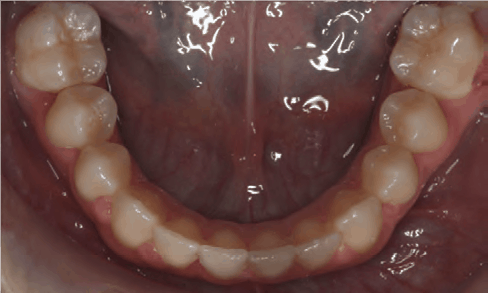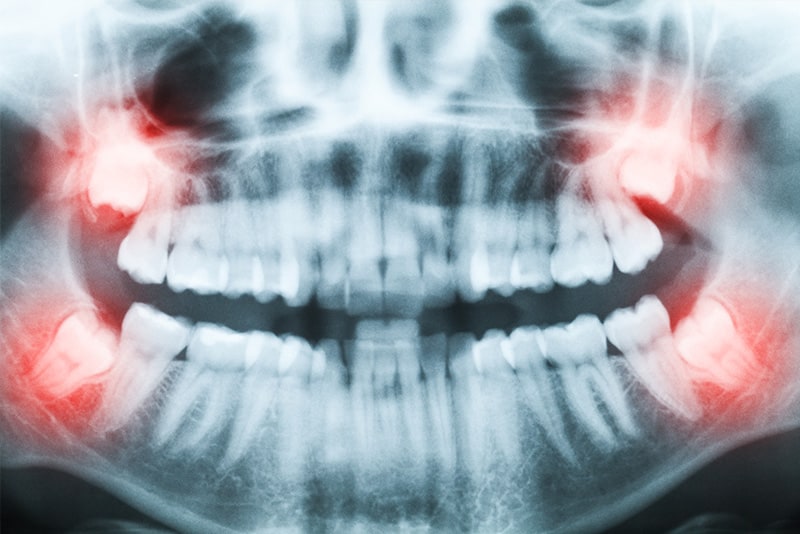BRACES FAQs
What is an Orthodontist?

What is an Orthodontist? A degree in Dentistry is typically 5 years long. However, just like doctors, a dental graduate will need to complete at least one year of compulsory service with the government before he or she can become a registered dentist and practise dentistry in Malaysia. After that, there is an option to choose to specialise in fields such as orthodontics, periodontics etc. The process of specialisation is usually 3 years long.
In short, it generally takes about 6 years to be a fully registered dentist and another 3 years to become a specialist!
I am interested in braces. Can you tell me more?

If you choose to have braces done, required diagnostic information (eg. dental impressions, photographs and X-rays) will be obtained on your first visit.
Once all diagnostic information has been obtained, we will discuss all aspects of your orthodontic treatment with you at the subsequent visit.
What are the benefits of having braces done?

- Improve your smile by straightening crooked teeth
- Facilitate maintenance of oral hygiene as irregular teeth are harder to keep clean
- Retract/pull back protruding front teeth which reduces the chances of trauma to the teeth
- Reduce damage to the gums from improper bite.
- Straighten teeth which have undergone “drifting” in patients with gum disease (periodontitis)
- Realign teeth to facilitate placement of denture, bridge or implant
- Improve self-esteem and confidence
I do not like the look of metal braces. What are my options?

- Clear braces (e.g. ceramic, composite)– these clear brackets are more aesthetically pleasing. They cost more and are more brittle. These brackets are very popular amongst adults as well as some teens.
- Lingual braces – the brackets are fitted to the back of the teeth. Therefore, they are not visible when smiling. The drawbacks are higher cost and longer chairside adjustment time. Patients might take a longer time to adjust to the braces due to tongue irritation.
- Clear aligners – these are clear flexible plastic splints which the patient can put on and remove themselves. The most famous brand is Invisalign® but there are other alternative brands as well. They are most suitable for mild to moderate cases. The disadvantages are high cost and high patient compliance as they must be worn for at least 22 hours a day.
What are the different parts of braces? What are the colourful things on the braces?

- Brackets are attachments which are glued to the teeth. Brackets can be made of stainless steel, titanium, plastic, ceramic or composite.
- Archwires are placed on the brackets to move teeth. Archwires can be made of stainless steel, nickel-titanium alloy or titanium-molybdenum alloy (TMA/beta titanium).
- The archwires are secured to the brackets using coloured elastic modules.
- Some brackets (ie. Self-ligating brackets) have special clips which hold the archwires in place without the need for elastic modules.
Here’s a video describing the different parts pf braces:

Do check out our blog comparing metal braces, clear braces and clear aligner.
What are Damon® braces?

Damon® braces are self-ligating brackets. This means that the brackets have clips to hold the archwires in place and elastic modules are not required. There are many different brands of self-ligating brackets but Damon® is probably the most well-known brand currently.
Damon® brackets, and self-ligating brackets in general, have been inaccurately presented as a separate and more superior type of braces. In reality, self-ligating brackets are sub-types of metal or clear brackets.

Here’s a video showing self-ligating brackets:

What are the pros and cons of self-ligating brackets (e.g. Damon®)?
One of the biggest advantages of self-ligating brackets (e.g. Damon®) is reduced clinical time for the dentists/orthodontists1,2 . This is because there are no elastic modules to replace and therefore wire changes are quicker.
Because elastic modules are not required, patients do not have to contend with discoloured elastic modules around the brackets. This is especially obvious with ceramic brackets.

Conventional ceramic brackets with transparent elastic modules which have discoloured

Self-ligating ceramic brackets
However, contrary to some published claims, self-ligating brackets do not result in faster treatment compared with conventional brackets3,4,5,6,7. The number of braces appointments is also similar between self-ligating and conventional brackets4,8.
Self-ligating brackets do not cause less pain than conventional brackets4,9 and they do not reduce the need for extractions8.
In conclusion, self-ligating brackets perform just as well as conventional brackets.
References:
1. Self-ligating brackets and treatment efficiency (Clinical Orthodontics and Research)
2. Efficiency of mandibular arch alignment with 2 preadjusted edgewise appliances (American Journal of Orthodontics and Dentofacial Orthopedics)
3. Systematic review of self-ligating brackets (American Journal of Orthodontics and Dentofacial Orthopedics )
4. Systematic review on self-ligating vs. conventional brackets: initial pain, number of visits, treatment time (Journal of Orofacial Orthopedics)
5. Self-ligating brackets do not increase treatment efficiency (American Journal of Orthodontics and Dentofacial Orthopedics)
6. A multi‐center randomized controlled trial to compare a self‐ligating bracket with a conventional bracket in a UK population: Part 1: Treatment efficiency (The Angle Orthodontist)
7. Treatment time, outcome, and anchorage loss comparisons of self-ligating and conventional brackets (The Angle Orthodontist)
8. Root resorption, treatment time and extraction rate during orthodontic treatment with self-ligating and conventional brackets (Head & Face Medicine)
9. Pain experience during initial alignment with a self-ligating and a conventional fixed orthodontic appliance system. A randomized controlled clinical trial (The Angle Orthodontist)
How do clear aligners (eg. Invisalign®) work?
 Clear aligners are transparent plastics which cover the teeth. They are almost invisible when worn. A series of clear aligners move the teeth little by little.
Clear aligners are transparent plastics which cover the teeth. They are almost invisible when worn. A series of clear aligners move the teeth little by little.
Below are some videos showing how clear aligners work.


Do I need to have extractions for braces?
It depends. Usually extractions of teeth are required to provide space to straighten crooked teeth. Sometimes teeth are extracted so that the protruding front teeth can be pulled back.
Do braces hurt?
The process of fitting the braces do not hurt. Some discomfort during eating is expected following fitting of the braces. The pain and discomfort normally last for a few days up until a week. Painkillers (eg. Paracetamol) can be taken if the pain is unbearable.
How often do I need to come for appointments?
 Appointments are normally scheduled every 4-6 weeks.
Appointments are normally scheduled every 4-6 weeks.
How long does treatment with braces take?
Treatment duration varies between patients and can take about 2 years to complete. More complex cases can take even longer.
What are the common problems associated with braces?

- Brackets can come off if you bite on something hard. It is advisable to avoid hard and chewy food throughout the duration of treatment.
- Pain or discomfort. There may be some discomfort in the first few days but the discomfort should go off after a week.
- Poor oral health. Cavities, white spot lesions (demineralization of the enamel) and gum disease can happen if excellent oral hygiene is not maintained.
- Multiple appointments. Braces treatment can take up to 2 years or more to complete. If you are planning to move abroad (e.g. for studies) within that time, then it may be advisable to defer treatment.
What happens after the braces come off?
Retainers would need to be worn full time initially, and then night time only. There are 3 types of retainers:
- Vacuum-formed retainers – these are clear plastic splints which can double as mouth guards if patients grind their teeth during sleep.
- Acrylic retainers (e.g. Hawley retainers) – these are made of acrylic/plastic and metal wires.
- Bonded or fixed retainer – these are wires glued to the back of teeth. Periodic check-ups are necessary in case the wire detaches from the teeth. Oral hygiene must be excellent to prevent gum problems.
All the different types of retainers function to maintain the alignment of teeth. Some movement of teeth is to be expected as we age. Therefore, it is important to continue with retainer wear to prevent the teeth from becoming crooked again.
Do check out our blog comparing the different types of retainers.

Vacuum-formed retainers

Hawley retainer

Bonded or fixed retainer
Why do you need to wear retainers?
Retainers are needed after braces treatment to prevent orthodontic relapse. Relapse is defined as the return to the original crooked alignment of teeth after braces treatment.
Relapse happens due to:
- Reorganisation of gum (periodontal ligament) fibers around the teeth.
- After braces are removed, the gum (periodontal ligament) fibers around the teeth will reorganise to accommodate the new tooth positions.
- The process happens over a 3-4 month period.
- The retainers function to stabilise the tooth positions.
- Progressive narrowing of the inter-canine width (dental arch) with age1,2.
- The constriction of the dental arch with age will result in the lower front teeth becoming crooked again if retainers are not worn.

Straight teeth after braces

Crooked teeth due to relapse from not wearing retainers after braces
How long do I need to wear retainers for?

The most common advice is to wear the retainers for as long as you want straight teeth. This would normally mean lifelong retainer wear.
A study found that 2 out of 3 patients who stopped wearing retainers completely developed crooked lower teeth (crowding) after about 10 years1.
Do wisdom teeth (third molars) exert pressure on the front teeth and cause the teeth to become crooked?

It is common belief that buried (impacted) wisdom teeth (third molars) can “push” the front teeth causing them to become crooked (crowding). This is not entirely true as patients who do not have wisdom teeth (congenitally missing) or already had the wisdom teeth removed still developed crowding of the teeth¹.



